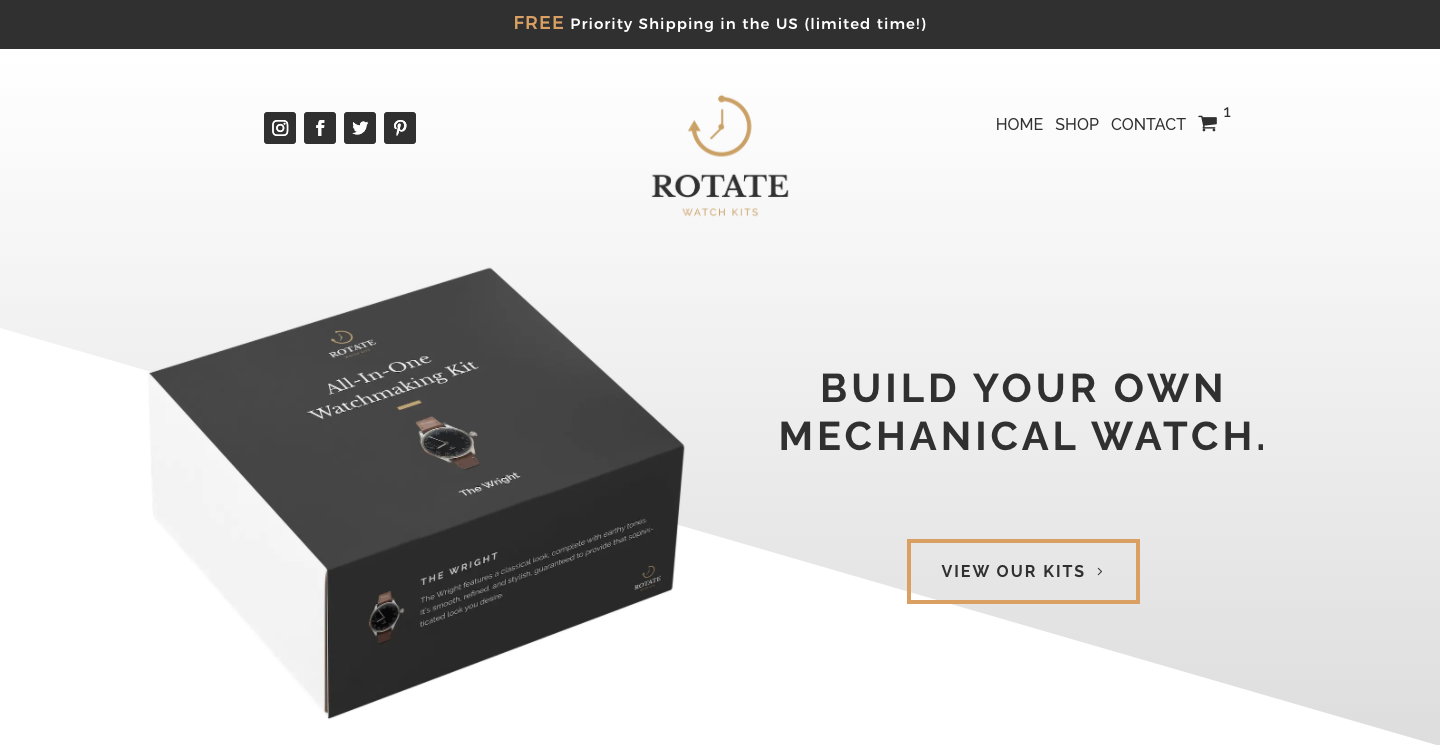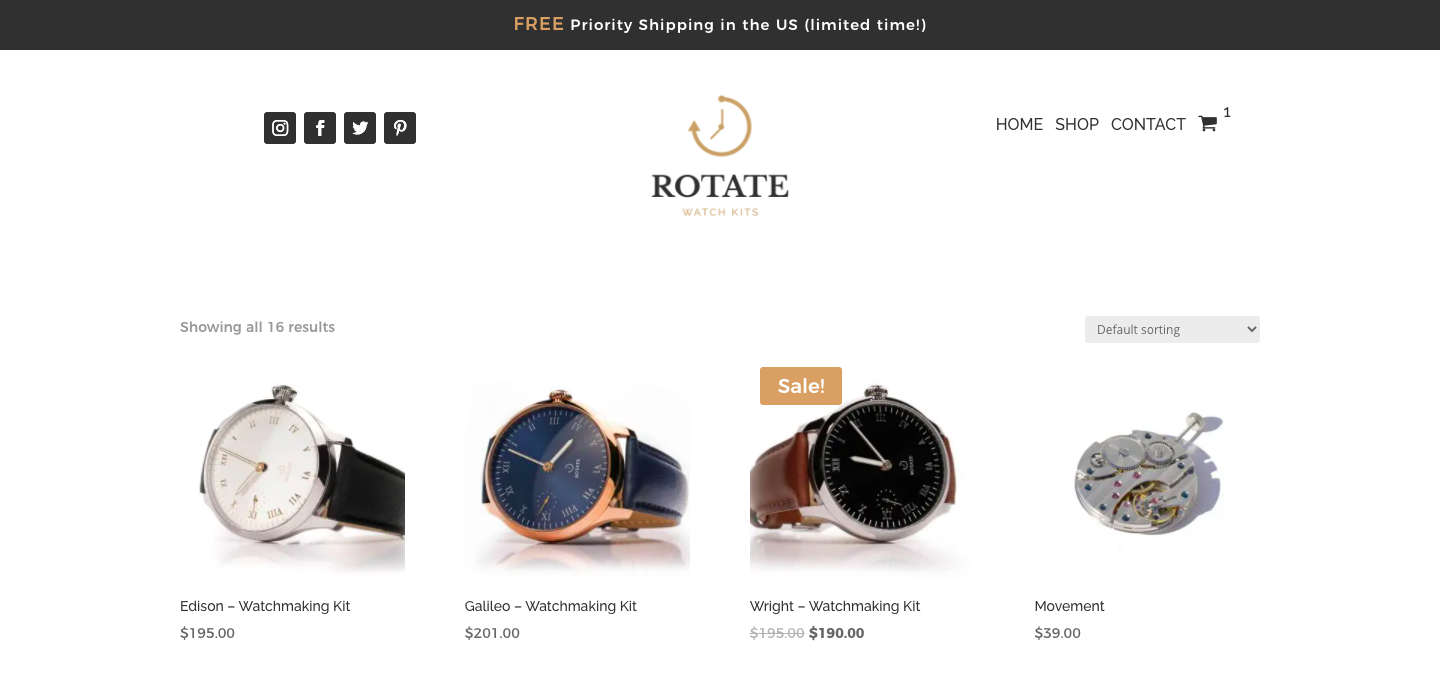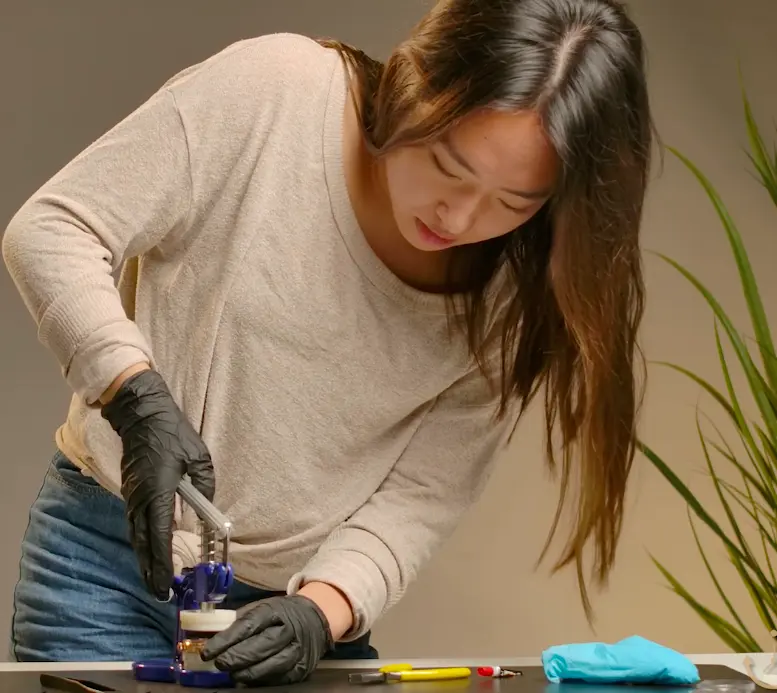Patreon now has 6M subscribers and has reached a $1.2B valuation: - **Demand for international content has increased** among American audiences, and founders who create in this arena should strike now. Yet some are speculating that the creator econom
Patreon now has 6M subscribers and has reached a $1.2B valuation:
-
Demand for international content has increased among American audiences, and founders who create in this arena should strike now. Yet some are speculating that the creator economy will decline as pandemic restrictions ease up.
-
Marketplace app Blender Market hit $232K MRR using one of the oldest strategies in the book: word-of-mouth. "Land and expand" is one of three methods that can help indie hackers activate word-of-mouth power right away.
-
This founder raised nearly $100K on Kickstarter in less than a month. Find out how she turned her love of DIY into a highly sought-after watchmaking kit.
Want to share your ideas with nearly 70K indie hackers? Submit a section for us to include in a future newsletter. —Channing
🖲 Patreon Hit 6M Subscribers and a $1.2B Valuation

from the Indie Economy newsletter by Bobby Burch
Patreon now has 6M subscribers and has reached a $1.2B valuation. This is the latest in a chain of billion-dollar content creator platforms that have surged since March 2020.
American audiences want more international content
What's happening: Americans are limited when it comes to international travel, but that's not stopping them from exploring international content. More Americans are engaging with overseas content than ever before, particularly video streaming, social media, TV, and movies.
The $10B creator economy has been the main force behind the shift in American behavior. According to Axios, US demand for non-US content has increased each quarter since 2019.
Why it matters: Indie hackers outside the US can capitalize on Americans' growing appetite for international content. There are many opportunities to utilize the variety of content-based platforms to reach new audiences.
Will it last? As vaccines become more widely available, there is a level of uncertainty for creators. Although daily time spent consuming content has doubled globally, consumer behavior may change as the world slowly opens up.
Here are the numbers:
- Pre-pandemic, daily content consumption time was 3.28 hours. Starting in March 2020, this rose to 7 hours.
- There has been a 48% increase in social media consumption and a 47% increase in traffic for news sites and streaming services.
Specific creator platforms are in flux:
- YouTube has seen the greatest increased traffic, with 43% of consumers spending more time on the platform.
- TikTok has seen the highest growth, with an 18% increase in the 18-24 age group.
2020 was stellar for creator platforms
In 2020:
-
Substack doubled its paid subscriptions and now has more than 500K paying customers.
-
OnlyFans is expected to rake in $300M in profits in 2021 with a total user base of 90M.
-
Twitch grew its active user base by 155% between December 2019 and November 2020. It currently boasts 8.5M users.
-
Patreon now has 6M paying subscribers and earned a valuation of $1.2B.
-
Cameo grew mobile app use by more than 450% and has more than 2M app downloads.
The immediate future looks bright for creators and indie hackers across the globe as traditional barriers to media dissemination continue to topple. What will happen as the pandemic is brought under greater control remains to be seen.
Will the continued control of the COVID-19 pandemic negatively affect creator platforms? Please share your thoughts.
Discuss this story, or subscribe to Indie Economy for more.
📰 In the News

💳 PayPal plans to launch a fintech super app. Major players currently dominating this space include Square, Affirm, and Klarna.
📝 Apple and Google are primed for legal battles as several US states vote on legislation that will make it easier to pursue antitrust lawsuits against big tech.
🏛 Uber lost in UK Supreme Court in a landmark tribunal challenge that ruled drivers as employees, not independent contractors.
👾 The BlizzCon gaming conference starts this weekend with promised updates on World of Warcraft and Diablo IV.
🤑 New startup College Cash plans to tackle US student loan debt by helping students pay off debt in exchange for user-generated content.
🗣 Word-of-Mouth Strategies You Can Implement Today

from the User Acquisition Channels newsletter by Darko G.
Word-of-mouth has always been one of the most effective strategies to attract customers. There are many ways to implement this strategy, and we'll go over three that you can start using right away.
Identify your users with an existing audience
Blender Market ($232K MRR), a marketplace where artists can sell 3D models, focused on attracting sellers with an audience as their early adopters:
Most of these early sellers were freelancers and prominent artists in the community. Our pitch was help them generate some passive side income and let us handle the infrastructure.
This approach paid off because those artists themselves had an audience that wanted to learn and buy from them. They multiplied our initial customer reach dramatically by sharing their products.

How to use this strategy: You don't have to be a marketplace to use this strategy. Just find out whether a segment of your users has an audience that is within your target audience as well.
Examples:
-
You have a product that targets bloggers. A segment of those people write to other bloggers on industry-related topics. Ask the bloggers who are your users to promote you to their existing audience.
-
You have a product that connects teachers and students. Focus on the teachers because their audience (the student) is also your audience.
Expand within the company's network
This strategy is called "land and expand," and it involves getting a company to use your product at the free level, then expanding your user base within that company from there.
Dependabot ($14K MRR) is a tool that keeps software dependencies up-to-date. Having a personal, open-source free tier helped the company get its foot in the door:
We've kept personal and open-source accounts free, and our costs are relatively low,. We've already had reports of people using Dependabot on their own projects, enjoying it, and then encouraging their employer to do the same.

How to use this strategy:
There are a lot of things you can try here:
- Introduce a free tier: When company employees sign up, encourage them to introduce your product to other colleagues.
- Engage in proactive outreach: Set up triggers for when two people with the same domain sign up, or when two people from the same company's IP address sign up. Learn how they're using the product and pitch to the company to recruit more of their employees.
Influence the influencers
Instead of targeting the end user (small businesses), Anchor Hosting ($20K MRR), a Wordpress hosting provider, focused on targeting people who influence them:
Most people host their WordPress website with whichever web host was recommended by the site designer. Because of this, I haven't spent any time or energy on marketing or advertising to customers, but have instead focused on attracting the web designers, web developers, and agencies who will organically refer customers my way.

How to use this strategy: Analyze the process your audience goes through before they buy your product/service. Identify the people/companies involved in that process and target them.
Example:
-
If you're targeting people building a home, they're probably in touch with architects. Try to get architects to recommend your product as the "next step" after buying the home.
Which of these word-of-mouth strategies can you implement right away in your business? Share your thoughts in the comments.
Discuss this story, or subscribe to User Acquisition Channels for more.
🍪 Growth Bite: Speak for yourself in company communications

from the Growth Bites newsletter by James Fleischmann
Thanks to an outdated study, it's common practice to speak as the company ("we") when communicating with customers. Instead, increase satisfaction and purchase intent by speaking for yourself ("I").
The vast majority (92%) of customer service managers use the pronoun "we" instead of "I" when interacting with customers. This may be due to the findings of a 1982 study, which advised downplaying the self in favor of the company. But a much more recent study (2018) has shown that this approach may no longer be applicable. Customers were up to 19% more satisfied and had a 15% higher purchase intent when the speaker said "I" instead of "we". Put simply, the former sounds emotionally involved while the latter sounds distant, and customers like the former. This effect seems to work for all customer service communications (inquiries, complaints, etc.) and may extend into other realms such as sales and PR. It also works across mediums (email, in-person, etc.).
Discuss this story, or subscribe to Growth Bites for more.
⌚︎ This Founder Raised $100K on Kickstarter for DIY Watchmaking Kits

from the Deep Dive newsletter by Halden Ingwersen
Have you ever had an idea so good that complete strangers gave you $100K to start it? In Fall 2019, Jennifer Zhang funded her Kickstarter for Rotate Watches to 600% of her original goal.
Rotate Watches offers novice engineers all-in-one kits to build their own mechanical watch. A lifelong tinkerer, Jennifer first became intrigued by mechanical watches in college.
It fascinated me how something so small could work so precisely without any batteries. Naturally, I decided to build one myself to best understand mechanical watches!
But building a DIY mechanical watch was more difficult than she expected. Not only could Jennifer not find an all-in-one kit, she had to order parts from all over the world. This took months, and when she finally received them, there were no instructions for assembly!
A natural founder at heart, Jennifer saw a business opportunity. In November 2017, Jennifer was took a college entrepreneurship class where students were asked to create a mock business using what they learned in class. Jennifer decided to use her DIY watchmaking kit concept for the class project, and to actually execute her learnings IRL. This was marked the inception of Rotate Watches.

With the help of a classmate, Jennifer created three versatile, wearable designs for watches; Rotate Watches still uses these designs today. She reached out to many hobbyists, watch enthusiasts, and experts in the watch and watch repair industry to validate her idea, both in terms of feasibility and likelihood of sales.
Finally, Jennifer used $1K of her savings to set up conceptual workflows for her backend.
Everything was in place, but she was hesitant. She still had to finish college, and she had big plans to work for a tech startup after graduation.
As much as Jennifer believed in Rotate, she didn't want to bet her whole life on one idea. She also didn't feel that she had the money to pull off a successful launch, so she worked hard at her day job, looking for a sign.
You know… the sign. The magical sign from the universe that tells every founder when it's time to make a leap of faith, quit the job, and go all-in. But, like most founders who wait for a sign, Jennifer realized that there wasn't one coming. It was now or (maybe) never!
In October 2019 with just two months of entry-level salary savings, Jennifer quit her job. She planned to launch in October, just in time for the holidays. The only prep she did was adjusting her lifestyle to live as frugally as possible.
She knew she couldn't execute the plans she'd made in college with the funds she had. Banking on the idea validation she had from other watch enthusiasts, she turned to Kickstarter.
Rotate Watches launched on Kickstarter on October 15th, 2019 with a 30 day campaign. The target was $15K. Jennifer met her goal in less than two days, and by the end of the month she'd raised $91K: this was 600% more than her goal. The project was chosen as a Kickstarter Staff Pick, which also helped with visibility.
Armed with the funds she needed, Jennifer was able to make the product even better. She spent the next eight months vetting a wide range of suppliers to repair the fractured supply chain tasked with providing everything needed in one box.
We finalized over a dozen different suppliers from all over the world, including Asia, the US, and Europe.
She also took time to improve her user buying experience, hiring a professional to build and maintain the site. During this time, she took online pre-orders before switching to live sales in 2020.

The company's revenue comes from various avenues. The bulk of sales come directly from the website, and Rotate Watches also partners with 40 retail locations in the US and distributors in Korea, Japan, and the Middle East. Lastly, a portion of sales come from partnerships with men's fashion sites such as Touch of Modern.
Jennifer notes that the partnerships, and working with a marketing agency, have both been very helpful in growing the company's revenue.

Now that Rotate Watches has successfully launched, Jennifer's goal is to keep growing and become a household name. She envisions increased presence in even more retail locations, and experimenting with licensing.
It's all very exciting and moving so fast. Entrepreneurship really is the best job in the world, and it's so amazing to see your creation grow.
We asked Jennifer what advice she had for other indie hackers, especially those in e-commerce, and she had plenty:
- Always maintain NDAs and partnership contracts, even if you think it won't be necessary.
- Outsource design work to designers, web work to web developers, advertisements to agencies, and easy or small tasks to interns.
- You'll probably lose a lot of money before you gain. Founders should fight risk-averse behavior and learn to love risk.
- Don't lose sight of retail locations. You may make higher margins on your website sales, but retail locations are how you'll get all over the country and become a household name.
- Constantly iterate and improve your UX and UI.

My top piece of advice is that it's not as hard as you think. Sure, the big picture may seem daunting, but each individual step is very doable, and you can get there.
If you'd like to learn more, check out the website for Rotate Watches, or find the company on Instagram.
You can also get in touch with Jennifer at hello@rotatewatches.com.
Discuss this story, or subscribe to Deep Dive for more.
🐦 The Tweetmaster's Pick

by Tweetmaster Flex
I post the tweets indie hackers share the most. Here's today's pick:

🏁 Enjoy This Newsletter?
Forward it to a friend, and let them know they can subscribe here.
Also, you can submit a section for us to include in a future newsletter.
Special thanks to Jay Avery for editing this issue, to Nathalie Zwimpfer for the illustrations, and to Bobby Burch, Darko G., and Halden Ingwersen for contributing posts. —Channing













